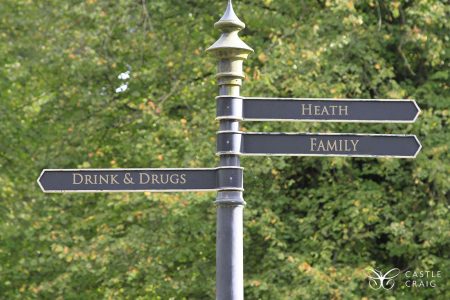What Is An “Alcoholic Nose” Or Rhinophyma?
In the past, Rhinophyma, characterised by a large, red, unsightly nose, was put down to alcohol misuse.
Pejorative descriptions such as ‘Drinker’s nose’ have been commonly used.
However, there is no direct causal link that has been established between Rhinophyma and alcoholism, and people who never drink can get Rosacea, often a precursor to Rhinophyma.
However, research shows that alcohol can increase the risk of getting Rosacea and trigger the progression from Rosacea to Rhinophyma.
Quick alcohol rehab links
- What is rehab like?
- How much does alcohol rehab cost?
- Detoxing from alcohol
What is Rhinophyma?
Rhinophyma is a skin disorder that affects the nose, causing it to become large, discoloured and bulbous.
It is thought to be connected to the skin condition Rosacea. Skin in the area commonly becomes red and inflamed for those affected, and small pustules may appear.
The condition develops over time and is more common in men, particularly those between 50 and 70.
People of Scandinavian, British or Eastern European origin are at higher risk, especially those with fair skin and a family history of Rosacea.

Is Rhinophyma dangerous?
The condition is not fatal, but the disfigurement resulting from enlarged blood vessels and tissues can cause anxiety and emotional distress.
It also carries the risk of skin cancer in the area (basal cell carcinoma). This affects about five per cent of sufferers.
Can Rhinophyma be treated?
Rhinophyma can be treated and responds best when caught early.
It does not respond well to medication, although antibiotics, anti-inflammatories and medication to prevent skin glands from producing oil may sometimes help.
The most common treatment for Rhinophyma is surgery to reshape or remove overgrown tissues and generally improve appearance.
Techniques include:
- Conventional surgery using a scalpel
- Laser resurfacing using a carbon dioxide laser
- Cryosurgery uses very cold temperatures to freeze and remove abnormal tissue
- Dermabrasion to mechanically scour top layers of tissue.

Is Rosacea the same as Rhinophyma?
The two are associated but not the same. Rhinophyma often develops in people suffering from chronic Rosacea that has progressed to a severe form.
What causes Rosacea?
There is no known direct cause of Rosacea or Rhinophyma. They were thought to have been caused by alcohol misuse in the past.
Terms such as ‘Drinker’s nose’ were commonplace. There is no firm evidence of this.
However, alcohol ingestion can often cause flushed skin at the time of use, which may trigger the onset of a Rosacea condition.
There is evidence of a genetic predisposition to Rosacea, with families showing a history of the disease.
A 2017 report by the American Academy of Dermatology found that drinking alcohol (especially wine) may increase a person’s risk of getting Rosacea.
However, the report stressed that:
- People who never drink can get Rosacea
- Alcoholism does not cause Rosacea
- Rosacea does not mean that a person has a drinking problem.

What are the symptoms of Rosacea?
Symptoms include intermittent blushing across the face, particularly the nose, cheeks and forehead, and a stinging sensation when applying water or skincare products.
As the disease progresses, broken blood vessels may appear on the skin’s surface with some swelling. Small bumps may also occur. The condition can become chronic.
Can Rosacea be treated?
The condition can be alleviated but not cured by antibiotics and certain skin creams.
It is not caused by poor hygiene and is not contagious. Sufferers should consult their GP before starting any treatment.
To mitigate symptoms, the NHS recommend the following steps:
- Avoid heat, sunlight and humid conditions
- Apply high-factor sunscreen every day
- Try to cover your face in cold weather
- Use gentle skincare products for sensitive skin
- Take steps to manage stress
- Diet: avoid alcohol, caffeine, hot drinks, cheese, spicy food
- Exercise: avoid too much violent exercise such as running.

Effect of alcohol on the skin
It is well known that alcohol deprives the skin of moisture and nutrients, leading to dryness, sagging and wrinkles.
Although there is no proven link to alcohol as a direct cause of skin conditions such as Rosacea and Rhinophyma, it is apparent that alcohol, particularly in large amounts, can have a negative effect where the disease is present.
Those wishing for a good complexion are advised to avoid alcohol wherever possible.
Those wishing to avoid more severe consequences, such as Rosacea and Rhinophyma, would be well advised to avoid alcohol altogether, mainly if they have a family history of the condition and are fair-skinned.



